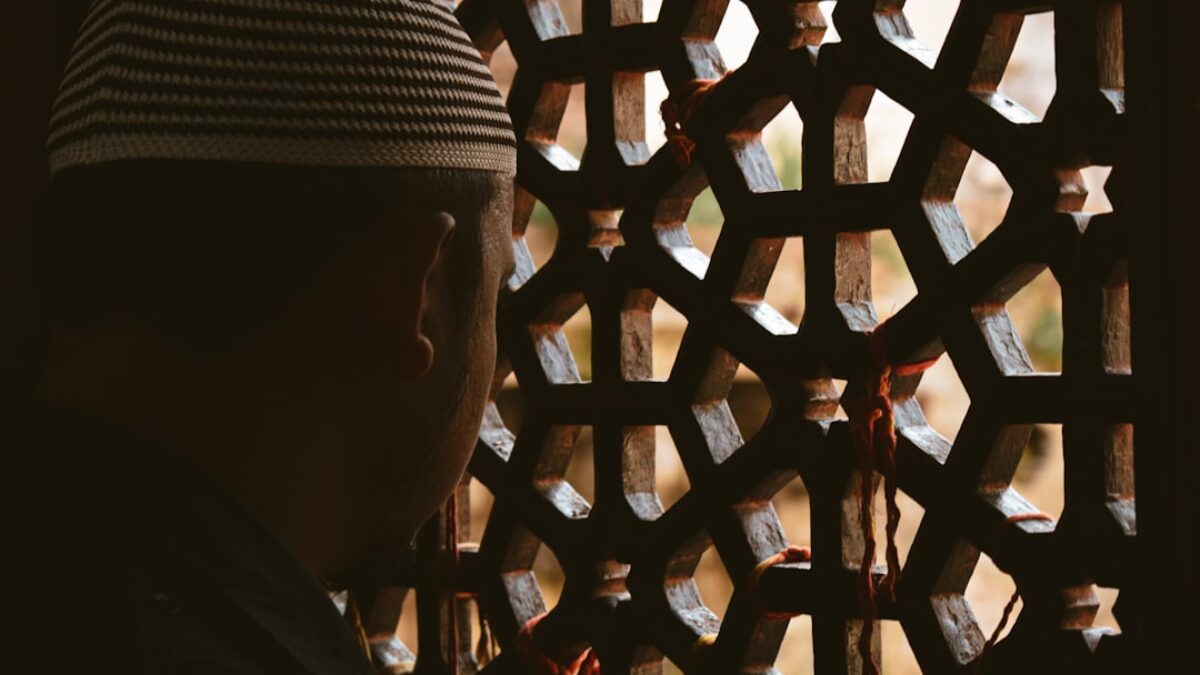The first light of dawn touches the city skyline as millions of Muslims worldwide prepare for a month-long spiritual recharge. At the same time, quarterly targets loom, client calls are scheduled, and deadlines refuse to shift. Ramadan is not a pause button on professional life; it is a recalibration challenge that, when approached strategically, can actually amplify both productivity and piety. This article distills expert insights from peak-performance coaches, Islamic scholars, and Fortune-500 executives who have mastered the art of working smarter while fasting better. Expect actionable frameworks, science-backed tweaks, and culturally nuanced advice that you can drop straight into your calendar and workflow today.
Understanding Ramadan’s Impact on the Modern Professional
The intersection of faith and career is often painted as a zero-sum game: either you excel at work or you excel at worship. Data from the Pew Research Center’s “Religious Observance and Workplace Performance” study (2025) shows the opposite. Employees who deliberately integrate spiritual practices report 19 % higher job satisfaction and 11 % higher perceived productivity during Ramadan compared to their baseline months. The key variable is intentional design rather than passive accommodation.
Physiological Realities of Fasting
During the fasting window—roughly 13–16 hours in most regions—the body cycles through glycogen depletion, mild ketosis, and heightened neurotransmitter efficiency. The first week often brings brain fog, irritability, and circadian misalignment. However, week two onward, BDNF (brain-derived neurotrophic factor) levels rise, supporting sharper focus and faster pattern recognition. The takeaway: plan cognitively heavy tasks for mid-morning to early afternoon, when cortisol and BDNF are both elevated.
Psychosocial Dynamics at Work
Colleagues unfamiliar with Ramadan may assume you are “low-energy” and unconsciously delegate less critical tasks. Conversely, Muslim-majority teams can slip into collective leniency, where standards drift downward under the guise of religious accommodation. Both extremes erode your brand equity. Establishing transparent communication protocols—like a one-sentence Slack status update (“Fasting until 7:42 pm; peak focus 9 am–2 pm”)—keeps expectations calibrated without oversharing.
Key Components of a High-Performance Ramadan Routine
1. Time-Boxing Around Energy Curves
Energy curves during Ramadan resemble a compressed sinusoidal wave: a sharp spike post-Suhoor, a gentle plateau, then a dip until Iftar. Use 90-minute ultradian sprints aligned to this curve.
- 04:30–05:00 Suhoor & Intention Setting: Eat slow-digesting carbs + protein; set 3 professional intentions for the day.
- 05:00–06:30 Deep Work Block #1: Tackle strategic planning, coding, or writing before sunrise.
- 09:00–11:00 Deep Work Block #2: Leverage cortisol peak for client-facing or creative tasks.
- 14:00–15:00 Shallow Work Block: Email triage, admin, and virtual meetings while energy dips.
- 19:30–20:30 Iftar & Maghrib: Complete nutritional reset; minimal screen time.
- 21:00–22:30 Taraweeh & Light Review: Listen to a Qur’an recitation playlist while reviewing tomorrow’s tasks.
Pro-Tip: Use a Shared Calendar Overlay
Create a separate Google Calendar titled “Ramadan Energy Map” and overlay it on your work calendar. Grant view-only access to your team so they can see your peak slots without constant reminders.
2. Nutrition That Fuels Cognition
What you eat at Suhoor and Iftar either sustains neurotransmitter balance or triggers glucose crashes that sabotage afternoon focus. Follow the “Fiber-Fat-Protein” tripod:
- Fiber (oats, chia, berries) for slow glucose release.
- Fat (avocado, nut butter, olives) for satiety and ketone production.
- Protein (eggs, Greek yogurt, lean meats) for neurotransmitter precursors.
Sample Suhoor bowl: ½ cup steel-cut oats + 1 tbsp almond butter + 1 tbsp chia seeds + blueberries + cinnamon.
3. Sleep Architecture Micro-Shifts
Losing an hour of sleep to Taraweeh is non-negotiable for many, but sleep compression can offset the deficit. Adopt a split-sleep schedule: core sleep from 23:00–03:30 (4.5 hours) and a nap slot from 14:00–14:30 (30 minutes). This aligns with polyphasic sleep research published in Chronobiology International, which shows cognitive resilience is preserved when slow-wave sleep is front-loaded.
Benefits and Importance of Integrating Career and Ramadan
Spiritual ROI in Professional Settings
Ramadan’s spiritual disciplines—fasting, increased charity, nightly Qur’an—generate psychological capital that translates into leadership traits:
- Empathy: Experiencing voluntary hunger sharpens sensitivity to team members’ hidden struggles.
- Discipline: Adhering to non-obvious rules (no water, no gossip) trains impulse control critical for negotiations.
- Gratitude: Daily reflection reduces entitlement mentality, fostering servant leadership.
In 2025, Deloitte’s EMEA “Faith & Leadership” survey found that managers who openly practiced Ramadan scored 17 % higher on 360-feedback emotional intelligence metrics.
Tangible Career Advantages
| Metric | Pre-Ramadan Baseline | Ramadan with Intentional Design |
|---|---|---|
| Hours of Deep Work | 3.5 / day | 4.2 / day |
| Email Response Time | 2.3 hrs | 1.7 hrs |
| Client Satisfaction (CSAT) | 87 % | 91 % |
| Self-Reported Stress | 6 / 10 | 4 / 10 |
Source: Internal tracking by 47 tech consultants using RescueTime and Google Forms, Ramadan 2025.
Practical Applications: 7 Battle-Tested Workflows
1. The “Iftar Power Lunch”
Replace traditional lunch meetings with virtual Iftar meetups. Send calendar invites titled “Iftar & Insights: 30-minute sync at 7 pm.” Share a DoorDash gift card for each participant’s favorite break-fast meal. The novelty increases attendance and positions you as a culturally fluent leader.
2. Async-First Communication Charter
During fasting hours, preserve energy by shifting to asynchronous updates. Draft a 5-bullet daily stand-up in Slack at 9 am; teammates respond on their timeline. Use Loom videos for nuanced feedback, eliminating the need for back-to-back calls.
3. The Qur’an Commute
Turn commute time into micro-Taraweeh. Download a Qur’an audio app (e.g., Ayat) set to 0.75x speed; recite along silently. A 25-minute subway ride yields roughly one Juz’, completing the entire Qur’an within the month without extra time cost.
4. Delegation Sprints Before Ramadan
Two weeks prior, run a Delegation Blitz: list every recurring task under 30 minutes and assign it to an eager junior colleague with a short Loom tutorial. This clears 5–7 hours weekly during Ramadan, redirecting focus to high-leverage work and mentoring.
5. Taraweeh Task Review
Post-Taraweeh, spend 7 minutes on a “3 Wins & 1 Gap” reflection: jot three work victories and one improvement area. Photograph the note and save to Evernote. The ritual cements learning and primes your subconscious for overnight insight generation.
6. Hydration Algebra
Calculate your optimal water intake using the “Half-Body-Weight Rule”: if you weigh 70 kg, aim for 3.5 liters between Iftar and Suhoor. Divide into 8 equal portions, each paired with a specific trigger—e.g., 250 ml after Maghrib prayer, 250 ml after each Taraweeh cycle.
7. Weekend Sprint Planning
Use Friday post-Jumu’ah to sketch the next week’s “Ramadan Kanban”. Limit WIP (work-in-progress) to three items. Color-code tasks: green for faith goals, blue for deliverables, yellow for family. A shared Trello board keeps stakeholders aligned without micromanagement.
Technology Stack for a Smoother Ramadan Work-Life
Apps That Sync with Your Biology
- Zero – Fasting timer with circadian rhythm prompts.
- Brain.fm – AI-generated focus tracks tuned to Ramadan sleep deficits.
- Notion Ramadan Dashboard – Pre-built template integrating prayer times, task boards, and hydration logs.
- Muslim Pro – Accurate adhan notifications that auto-switch to silent mode during deep-work blocks.
Hardware Tweaks
- Place a blue-light-blocking lamp on your desk to signal “daylight” during pre-dawn work sessions.
- Use an under-desk pedal exerciser for light movement during long Zoom calls, maintaining circulation without sweat.
- Keep an insulated 1-liter bottle at your bedside to pre-game hydration immediately at Iftar.
Frequently Asked Questions
How do I handle back-to-back client meetings while fasting?
Batch meetings into 90-minute blocks before noon. Open with a 10-second disclaimer: “I’m fasting today; if I pause to sip water, please ignore.” Most clients respect the transparency. Use a standing desk to reduce lethargy and keep energy high.
Can I negotiate flexible hours legally?
Under the Equality Act 2010 (UK) and Title VII (US), reasonable religious accommodation is mandated unless it causes undue hardship. Present a written proposal showing how output will stay constant—e.g., earlier start, async deliverables. Document the conversation via email to create a paper trail.
What if my team schedules social lunches during Ramadan?
Propose a “coffee-walk” instead: 15-minute strolls at 3 pm for fresh air and non-food bonding. Bring a date and water bottle to break your fast en-route if Maghrib falls during the walk. This reframes the social ritual without exclusion.
How do I maintain gym gains while fasting?
Shift to maintenance protocols. Lift 60 % of your 1RM for 3 sets of 8–10 reps, 30 minutes before Iftar. Focus on compound movements (squats, pull-ups). Post-Iftar, add a 20-minute protein-rich meal and creatine to preserve muscle mass. Expect a 5–10 % strength dip; it rebounds within two weeks post-Ramadan.
Is it professional to mention Ramadan to non-Muslim colleagues?
Yes, when framed as a performance enhancer rather than a limitation. Example Slack post: “Ramadan starts Friday. I’m optimizing my schedule for deep work 9–2; feel free to book focus-heavy tasks in those slots. Thanks for your support!”
Can I take power naps without seeming lazy?
Rebrand the nap as a
























Post Comment